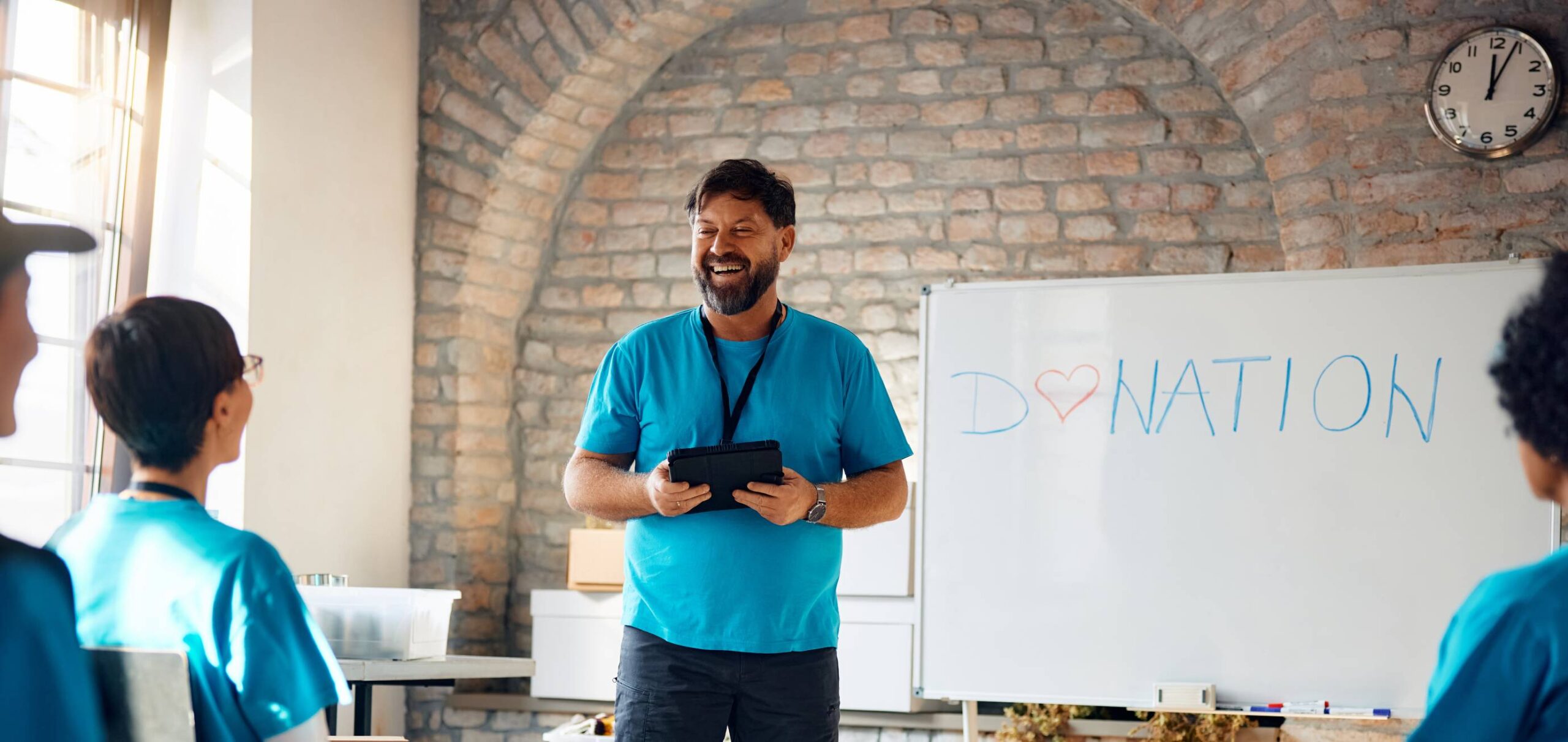In recent years, corporate social responsibility (CSR) has evolved from a nice-to-have to a business imperative. Companies are increasingly recognizing the value of engaging their employees in social impact initiatives, not only for the benefit of society but also for the wellbeing and development of their workforce (Glavas, 2016). However, many corporate volunteering and giving programs still take a transactional approach, focusing only on metrics like hours logged or dollars donated rather than the transformative potential of these experiences (Rodell, Breitsohl, Schröder, & Keating, 2016). By leveraging insights from neuroscience and behavioral psychology, companies can design social impact programs that not only drive meaningful change in communities but also rewire employees‘ brains for empathy, resilience, and prosocial behavior. Let’s dive into the neuroscience of doing good.
The Science of Neuroplasticity
At the heart of this approach is the concept of neuroplasticity – the brain’s ability to form and reorganize synaptic connections in response to learning or experience (Cramer et al., 2011). Contrary to the long-held belief that our brains are fixed and unchanging after a certain age, research has shown that the human brain remains plastic throughout our lifespan (Merzenich, Van Vleet, & Nahum, 2014). This means that by engaging in novel, challenging experiences, we can actually alter the structure and function of our brains, enhancing our capacity for learning, growth, and adaptation.
Volunteering experiences, when designed effectively, can provide exactly the kind of novel, challenging stimuli that promote neuroplasticity. By immersing employees in unfamiliar environments, exposing them to new perspectives, and pushing them outside their comfort zones, companies can create the conditions for neural growth and rewiring (Voss et al., 2017). Over time, as employees engage in repeated social impact experiences, these neural changes can become embedded, leading to lasting shifts in mindset and behavior.
Impactful volunteering experiences can also:
- Satisfy employees’ core psychological needs
- Shift employees’ stress response
- Create a positive feedback loop of meaning, connection and contribution
Let’s take a deeper look into each of these including how to design your program to generate these transformative outcomes.
Satisfying Core Psychological Needs
Beyond promoting neuroplasticity, impactful volunteering experiences can also satisfy employees’ core psychological needs, enhancing their motivation and wellbeing. According to self-determination theory, humans have three innate psychological needs – autonomy, competence, and relatedness – that must be met for optimal functioning and growth (Ryan & Deci, 2000).
- Autonomy refers to the need to feel in control of one’s own behavior and goals. Volunteering experiences that give employees choice and agency in how they contribute can enhance feelings of autonomy.
- Competence refers to the need to feel effective and capable in one’s actions. Skill-based volunteering opportunities that allow employees to apply and develop their professional expertise can boost feelings of competence.
- Relatedness refers to the need to feel connected to and cared for by others. Volunteering experiences that foster meaningful interactions and a sense of shared purpose with colleagues and community members can promote feelings of relatedness.
Research has shown that satisfying these core needs through volunteering can lead to increased job satisfaction, organizational commitment, and employee retention (Haski-Leventhal, Kach, & Pournader, 2019). By designing social impact programs with these psychological needs in mind, companies can create a virtuous cycle of engagement and wellbeing.
Shifting the Stress Response
In addition to promoting neuroplasticity and satisfying core needs, impactful volunteering experiences can also help shift employees’ stress response. Chronic stress has been linked to a range of negative health outcomes, from anxiety and depression to heart disease and cognitive decline (McEwen, 2017). However, research suggests that not all stress is created equal. While uncontrollable, overwhelming stress can be damaging, moderate amounts of controllable stress can actually be beneficial, a phenomenon known as stress inoculation (Crum, Akinola, Martin, & Fath, 2017).
Volunteering experiences that push employees outside their comfort zones in a supportive, structured way can provide a form of stress inoculation, helping them build resilience and coping skills. As employees navigate novel challenges and see themselves making a positive impact, they can develop a greater sense of self-efficacy and control (Brown & Lawford, 2018). Over time, these experiences can shift the brain’s stress response, reducing reactivity to future stressors and promoting overall wellbeing.
Creating a Positive Feedback Loop
Perhaps most powerfully, impactful volunteering experiences can generate a positive feedback loop of meaning, connection, and contribution that reinforces engagement over time. As employees see the tangible impact of their efforts, they can develop a deeper sense of purpose and fulfillment in their work (Glavas & Kelley, 2014). As they form meaningful relationships with colleagues and community members, they can experience increased social support and belonging (Grant, Dutton, & Rosso, 2008). And as they continue to contribute their skills and passion to causes they care about, they can reinforce their identity as change makers and community leaders (Caligiuri, Mencin, & Jiang, 2013).
This positive feedback loop not only amplifies the benefits of each individual volunteering experience but also creates a self-sustaining motivation to continue engaging in prosocial behavior. Research has shown that employees who have positive volunteering experiences are more likely to volunteer again in the future and to become champions for social impact within their organizations (Rodell, 2013).
Designing for Transformation
So how can companies leverage these neuroscience principles to design transformative social impact programs? First and foremost, it requires a shift in mindset from viewing volunteering as a one-off activity to seeing it as an integral part of the employee development journey. Just as companies invest in training and mentorship to build professional skills, they must also invest in experiences that build empathy, resilience, and prosocial behavior.
On a practical level, this means creating volunteering opportunities that are immersive, challenging, and meaningful. Rather than one-day events or low-skill activities, companies should look for ways to engage employees in deeper, longer-term partnerships with community organizations. Skill-based volunteering, where employees apply their professional expertise to capacity-building projects, can be particularly impactful (Allen, 2012). So can immersive experiences like nonprofit board service or global pro bono fellowships, which push employees to take on leadership roles and navigate complex challenges (Sawhill & Williamson, 2001).
It also means intentionally building in elements that satisfy employees’ core psychological needs:
- Giving employees choice in which causes or projects they contribute to can enhance autonomy.
- Providing training and support to ensure employees feel equipped to make a meaningful impact can boost competence.
- And fostering a sense of shared purpose and camaraderie among volunteers can promote relatedness.
Finally, it means measuring success not just in terms of hours or dollars, but in terms of the transformation that occurs within employees themselves. Surveys and reflective exercises that capture changes in empathy, resilience, and prosocial identity over time can provide a more holistic view of impact. Tracking the ripple effects of volunteering on employee engagement, teaming, and leadership development can help build the business case for continued investment.
Inspire, Train and Educate your employees with the Transformative Approach
Engage Chris Jarvis, Realized Worth Co-Founder & CSO, to inspire and educate your employees, employee volunteers or social impact teams on the Transformative Approach. With 15+ years of experience working with some of the world’s most notable brands, Chris Jarvis and other RW Speakers bring rich expertise, engaging stories and compelling research in social impact to your audience.
The Science is Clear: Doing Good is Good for Us
By leveraging the principles of neuroplasticity, psychological need satisfaction, stress inoculation, and positive feedback loops, companies can hardwire social impact into the employee experience in a way that benefits all stakeholders. Employees gain a greater sense of purpose, belonging, and resilience. Communities gain access to the skills and passion of corporate volunteers. And companies gain a more engaged, adaptive, and purpose-driven workforce.
But achieving these outcomes requires a fundamental shift in how we approach corporate social impact. It’s not about checking a box or boosting PR, but about truly investing in the growth and transformation of our people. It’s about viewing social impact not as a side initiative, but as a core strategy for developing leaders and driving sustainable business growth.
As more companies embrace this neuroscience-based approach to CSR, we have the potential to unlock a new era of shared prosperity and positive change. By harnessing the power of our brains for good, we can create a world where doing well and doing good are one and the same.
References:
- Allen, K. (2012). The big tent: Corporate volunteering in the global age. Madrid: Fundación Telefónica.
- Brown, A. J., & Lawford, H. L. (2018). Volunteering, happiness and public policy. Journal of Happiness Studies, 19(6), 1619-1636.
- Caligiuri, P., Mencin, A., & Jiang, K. (2013). Win-win-win: The influence of company-sponsored volunteerism programs on employees, NGOs, and business units. Personnel Psychology, 66(4), 825-860.
- Cramer, S. C., Sur, M., Dobkin, B. H., O’Brien, C., Sanger, T. D., Trojanowski, J. Q., … & Vinogradov, S. (2011). Harnessing neuroplasticity for clinical applications. Brain, 134(6), 1591-1609.
- Crum, A. J., Akinola, M., Martin, A., & Fath, S. (2017). The role of stress mindset in shaping cognitive, emotional, and physiological responses to challenging and threatening stress. Anxiety, Stress, & Coping, 30(4), 379-395.
- Glavas, A. (2016). Corporate social responsibility and organizational psychology: An integrative review. Frontiers in Psychology, 7, 144.







